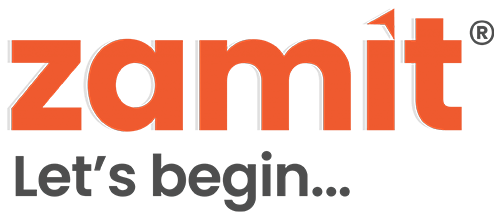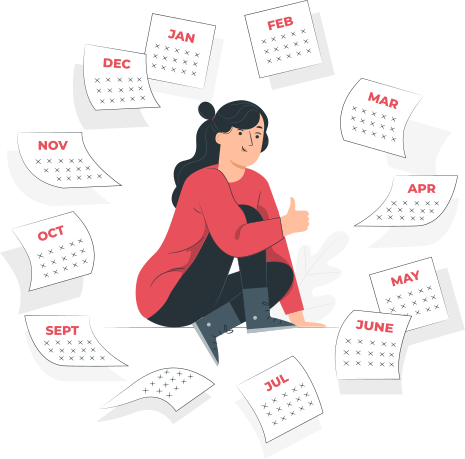Being mentored is an enriching experience for all students, however, when it comes to differently-abled students, good mentorship can mean the difference between getting through school and becoming future-ready. In this post, we will guide you through the essential steps and strategies of being a pillar of strength and guide to these unique students in your classroom. So, let’s dive right in!
Understanding Different-Abilities
When it comes to mentoring differently-abled students, it’s crucial to recognise that there is a wide range of challenges that these students may face, whether physical, intellectual, sensory, or developmental. As a mentor, it is essential to approach this journey with empathy, respect, and a willingness to learn. Educate and familiarise yourself with the common elements of each orientation.
Physical Disabilities
Physical disabilities encompass conditions that affect an individual’s mobility, strength, or dexterity. People with physical disabilities encounter obstacles that hinder their ability to navigate the physical world. These disabilities can be congenital, resulting in challenges from birth, or acquired due to accidents, injuries, or illnesses.
Examples of physical disabilities include:
- Paralysis: Partial or complete loss of muscle function, often stemming from spinal cord injuries or diseases like multiple sclerosis.
- Amputations: The loss of a limb due to traumatic incidents, medical necessity, or congenital conditions.
- Cerebral Palsy: A neurodevelopmental disorder affecting muscle control, coordination, and movement.
- Muscular Dystrophy: A group of genetic conditions that cause progressive weakening and degeneration of muscles.
Students with physical disabilities face unique challenges, often requiring mobility aids, adaptive technologies, or modifications to their environments to enhance their independence and accessibility. Assistive devices and accommodations, like wheelchairs, prosthetics, ramps, and accessible transportation, play a crucial role in empowering them to lead fulfilling lives.
Cognitive Disabilities
Cognitive disabilities impact an individual’s mental processes and intellectual functioning. They can affect cognition, memory, problem-solving, decision-making, and learning power.
Some examples of cognitive disabilities include:
- Autism Spectrum Disorder (ASD): A complex neurodevelopmental condition characterised by challenges in social interaction, communication, and repetitive behaviors.
- Down Syndrome: A genetic disorder caused by an extra copy of chromosome 21, leading to intellectual disability and certain physical features.
- Attention Deficit Hyperactivity Disorder (ADHD): A condition characterised by difficulties with attention, hyperactivity, and impulsive behavior.
- Intellectual Disabilities: A group of limitations in intellectual functioning and adaptive behavior, often present from childhood.
Students with cognitive disabilities may face challenges in learning, socialisation, and daily tasks. However, inclusive teaching and a supportive classroom environment, enforced by developing empathy in other students, can help them thrive and contribute to the class.
Sensory Disabilities
Sensory disabilities refer to impairments in vision, hearing, or other senses that affect an individual’s perception of the world.
Visual impairments include:
- Blindness: Total or near-total loss of vision.
- Low Vision: Significant visual impairment that cannot be fully corrected with glasses or contact lenses.
Hearing impairments include:
- Deafness: Complete or severe hearing loss, making it challenging to perceive sound.
- Hearing Loss: Partial impairment of hearing capacity.
To navigate their surroundings effectively, students with sensory disabilities can rely on alternative senses or specialised assistive devices.
- Screen readers, Braille, and other accessibility tools can assist students with visual impairments in accessing written material, while guide dogs or white canes support their mobility.
- Hearing aids, cochlear implants, and sign language can facilitate communication for students with hearing impairments.
Psychological Disabilities
Psychological disabilities encompass mental health conditions impacting an individual’s cognitive, emotional, and behavioral well-being. They can affect anyone, irrespective of age, gender, or background, and often require support, treatment, and understanding from society.
Some common psychological disabilities include:
- Depression: A persistent feeling of sadness, loss of interest, or hopelessness.
- Anxiety Disorders: A range of conditions causing excessive worry, fear, or unease.
- Bipolar Disorder: Cycles of extreme mood swings, including periods of elevated mood (mania) and depression.
- Schizophrenia: A chronic mental disorder characterized by distorted thoughts, hallucinations, and difficulty distinguishing reality.
Psychological disabilities often face great societal stigma due to misconceptions and stereotypes. An even bigger threat to students riddled with mental health struggles is that they go unnoticed entirely, dismissed as attitude problems or a lack of motivation. Recognising mental health conditions, promoting awareness in the classroom and school, maintaining an open line of communication with parents, and offering counselling and support from time-to-time can help students with psychological troubles lead fulfilling lives and receive the assistance they need.
Creating A Safe Environment
A safe and inclusive environment is vital to mentoring differently-abled students.
- Buildingrapport and establishing trust are the first steps towards a successful mentor-mentee relationship.
- Active listeningis one of the most important 21st-century skills for a mentor as it can be used to gain a deeper understanding of each student’s abilities, challenges, and goals.
- Encourage open discussions, allowing the students to express themselves freely in front of everyone, share their unique perspective, as well engage with peers.
Utilising Resources and Adapted Materials
Throughout your mentorship journey, you’ll come across various tools, technologies, and assistive devices that can greatly aid differently-abled students. Explore these resources and educate yourself on how to leverage them effectively. Additionally, seek out accessible materials and curricula that enhance their learning experiences. Collaborating with experts in the field can provide valuable insights into specialised curricula, if necessary.
Encouraging Independence and Self-Advocacy
As a mentor, encourage the development of independence and self-advocacy skills in your mentees. Building self-esteem and self-confidence is vital for their overall growth and success. Help them understand their rights and empower them to express their needs confidently. Inspire them to embrace challenges head-on and pursue their dreams, knowing that you are there to support and guide them every step of the way.
Building a Supportive Network
Mentoring differently-abled students is a collaborative effort involving not only you but also their parents or guardians, educators, and other mentors. Encourage the involvement of these key stakeholders and foster a supportive network around the students. By sharing experiences, seeking advice, and learning from others, you can further enhance your mentorship skills while creating a more comprehensive support system for the students.
Celebrating Success and Lessons Learned
Reflecting on the positive impact you make as a mentor is essential. Celebrate the successes, big or small, achieved by your mentees. Share these success stories to inspire others and highlight the limitless potential of differently-abled students. Additionally, recognise the valuable lessons you learn through this mentorship experience. Each encounter teaches you more about their unique needs, and ultimately, about empathy, compassion, and the power of human connection.
Conclusion
Becoming a mentor for differently-abled students is an opportunity to unlock their true potential and make a lasting impact on their lives. By understanding their individual needs, setting realistic goals, and providing personalised support, you can empower them to thrive. Remember, it’s not just about the mentorship journey; it’s about building a supportive network, celebrating successes, and continually learning.
For more teacher resources, visit www.zamit.one.


